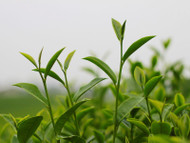Frequent customer questions: Which tea has the most EGCG?
Posted by Yuki on 9th Jan 2023
Frequent customer questions: Which tea has the most EGCG?
We've been running this shop in Singapore for a few years now, and from my humble experience, many of the people who are newly interested in Japanese green tea come to us looking for the tea with the most EGCG.
So what's EGCG in the first place?
EGCG is a type of nutrient in green tea. It's one of the super healthy "Green Tea Catechins" found in abundance, especially in Japanese green tea. Not only is it an extremely potent antioxidant, but it is also responsible for several of the health benefits associated with this almost magical drink.
Yes, tea was drunk as a medicine from ancient times, and EGCG is perhaps the biggest reason for this.
That's why it's understandable that many people interested in Japanese tea come looking for EGCG. After all, Japanese green tea contains one of the highest levels of EGCG out of all the different tea types.
See Also: Ultimate Guide: The Powerful Health Benefits of EGCG and How You Should Take It
So the question is this.
Which tea in our shop has the highest amount of EGCG?
Let's talk about tea types first.
Does Matcha have high EGCG?
A lot of people associate Matcha with the highest amount of EGCG. This thought is especially true because Matcha is a powdered tea you directly consume instead of infusing it as the standard loose-leaf teas.
However, this is actually a misconception.
Yes, the absorption of nutrients is efficient in powdered form. However, it's hard to get enough EGCG through Matcha for two reasons.
- Matcha is cultivated in a way that reduces EGCG.
- You only use 1.5g of Matcha per serving.
Let's jump into some biology lessons for a second!
So the EGCG is a nutrient produced when sunlight hits the tea plant leaves. Scientists believe that the tea tree makes this substance to protect itself from sunlight.
Therefore, the more the tea hits sunlight, the more EGCG it produces. Another essential nutrient in tea plants is called Theanine, which is converted into a different nutrient to make EGCG.
You might think, Great! Then let's spray the tea bush with an abundance of sunlight!
Unfortunately, there's one problem here. The EGCG is a highly astringent component of tea. When you taste the tea, you might feel dry, pulling sensation on the tongue. This sensation is astringency. It's a little different from the "bitterness" of the tea. It's more of a feel of the tongue rather than the taste.
Moderate amounts of EGCG are sometimes lovely. It adds substance and body to the taste of the tea. It enhances the enjoyability of the drink.
However, the tea becomes extremely astringent and flat if there is too much EGCG. Furthermore, the nutrient that sunlight converts, the Theanine, is actually the nutrient that is responsible for the delicious umami of the tea.
So the sunlight reduces the delicious umami while increasing the astringency of the tea.
Therefore, too much sunlight will make the tea too astringent and challenging to enjoy!
That's why there is a massive effort for quality Japanese green tea to reduce the amount of "EGCG" in the tea plant during the cultivation process.
This effort is especially true for Matcha.
Since Matcha is a tea you consume directly by dissolving into water, any astringency in the tea becomes pronounced compared to loose-leaf infusions. It would be a harsh drink to enjoy.
That's why Matcha leaves are carefully cultivated by shading from the sun and only using the young leaves of the tea plant to minimize the amount of astringency, hence lowering the amount of EGCG.
The second reason is that Matcha is so strong (and expensive!) that you wouldn't be gobbling down gallons of tea every day.
A typical serving of Matcha would be about 1.5g per 60-70 ml of water. Whisk the powder to mix, and it becomes a small and thick drink. Since it is very thick and high in caffeine, consuming several servings is challenging. Therefore there is a limit to how much EGCG you can take through Matcha.
Sencha or Tamaryokucha is the Recommendation for EGCG
The best way to absorb EGCG is by drinking Sencha or Tamaryokucha. These are loose-leaf Japanese tea that is either not shaded as much as Matcha or not shaded at all.
*By definition, Sencha and Tamaryokucha are not shaded. However, these teas are sometimes shaded to a certain degree to enhance the taste as well.
Now, the quantity of EGCG included in the tea varies depending on the grade. However, the typical Sencha or Tamaryokucha will have much higher amounts of EGCG than Matcha.
The other benefit is that it's easy to drink a lot of Sencha and Tamaryokucha. You can easily infuse 10g in 500ml and infuse twice. Depending on the tea, that will give you more than 300mg of EGCG daily.
That would be a very high amount of EGCG, even more than many of the human-based scientific experiments carried out in the studies of the health benefits of EGCG.
So if you're looking for EGCG in our shop, go to either the Sencha section or the Tamaryokucha section.

